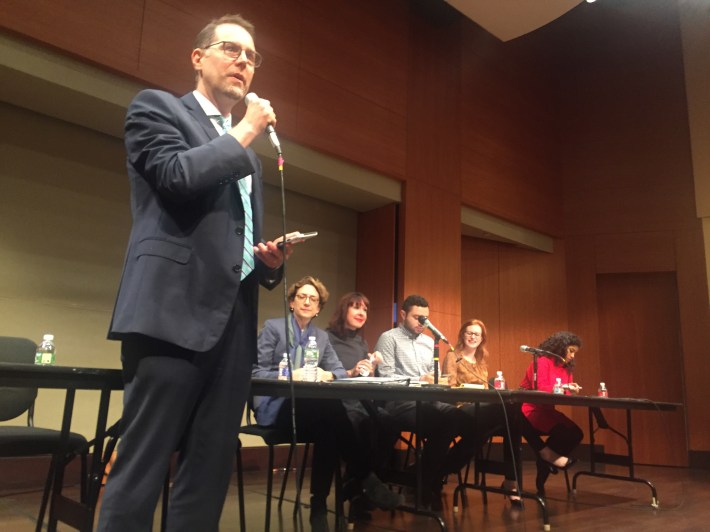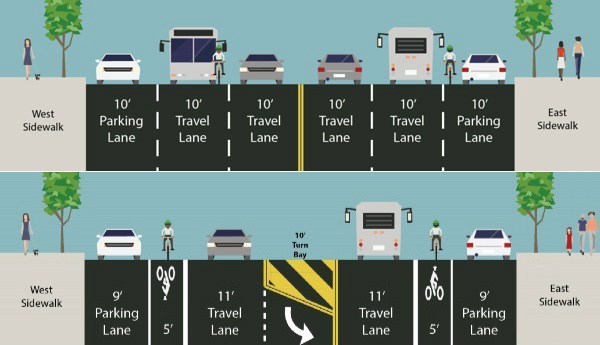DOT will not move ahead with a proven life-saving redesign of upper Amsterdam Avenue because of ongoing objections from the fact-averse leadership of Manhattan Community Board 9.
The proposal would reduce dangerous speeding and improve the flow of automobile traffic. But CB9's leadership, which has refused to put the project to a vote for 19 months now, is unwilling to support a street design that has saved lives in many other city neighborhoods.
"All it's going to do is slow traffic down," Transportation Chairwoman Carolyn Thompson said at a "town hall" meeting with Council Member Mark Levine and DOT Commissioner Polly Trottenberg on Monday night. "Every time you say you're taking out a lane, you're slowing traffic down. I don't care what they're saying, it slows traffic down."
Thompson spoke to Streetsblog after the meeting, where she and the board's Vice Chairman Victor Edwards opposed the traffic-calming plan, which is not even as complete as the improvements made to one-way Amsterdam Avenue below 110th Street.
Indeed, instead of a protected bike lane, the plan for the two-way stretch from 110th Street to 162nd Street would install unprotected lanes, painted medians, and turn lanes in both directions [PDF]. The goal is to calm traffic on the stretch where 141 people have been injured in the 19 months that Thompson has refused to move the project forward, according to Crashmapper.
Yet DOT, which has no legal obligation to wait for the board's verdict, has decided to wait for the board to vote — the latest example of the agency seeking to build consensus rather than opening up its time-tested toolbox.

And now it's too late for the season anyway, thanks to upcoming colder weather, which makes it impossible to paint lines on the street, said a DOT source. (And you thought, "Wait 'til next year" was only a Brooklyn thing.)
CB9 is right about one thing: DOT's plan would reduce the number of car lanes. But the agency argues — with considerable experience — that the remaining lanes would be more efficient because the new turning bays will prevent left-turning drivers from holding up traffic behind them. Backups like those cause unnecessary merging, which in turn slows down traffic even more, the agency said.
Thompson and her colleagues on CB 9 don't believe it, but they've framed their opposition in terms of the supposed negative impact of exhaust fumes from idling cars during rush hour.
But Thompson was crystal clear in her interview with Streetsblog that her concern was the loss of space for automobiles. She noted — unprompted — that she does not believe census data that shows only 20 percent of households in the district own cars.
"I don't know what [the number] is, but I know it's not that," she said.
The board will vote, but only if DOT produces a "health study" detailing any adverse environmental impacts, Edwards said.
"It's impacted by two bus depots and a sewage treatment plan already, so when you limit to one lane, people are going to be idling that much longer," he said. "For the volume of traffic that's there now, I don't think the turn lanes are going to make that much more of a difference."
Levine, the local council member, disagrees. In September, he urged DOT to move forward, despite Edwards and Thompson's opposition.
"I still have great hope that the community board will support this project," Levine said. "There is safety on the line here.
"What you get is, yes, less speeding, but you also avoid the kind of back-ups that you get behind left-turners and other folks obstructing. It's not clear to me why, at all, that would lead to more idling," he said. "If it leads a few suburban commuters to take mass transit instead, well, that's the ultimate win for air quality."






